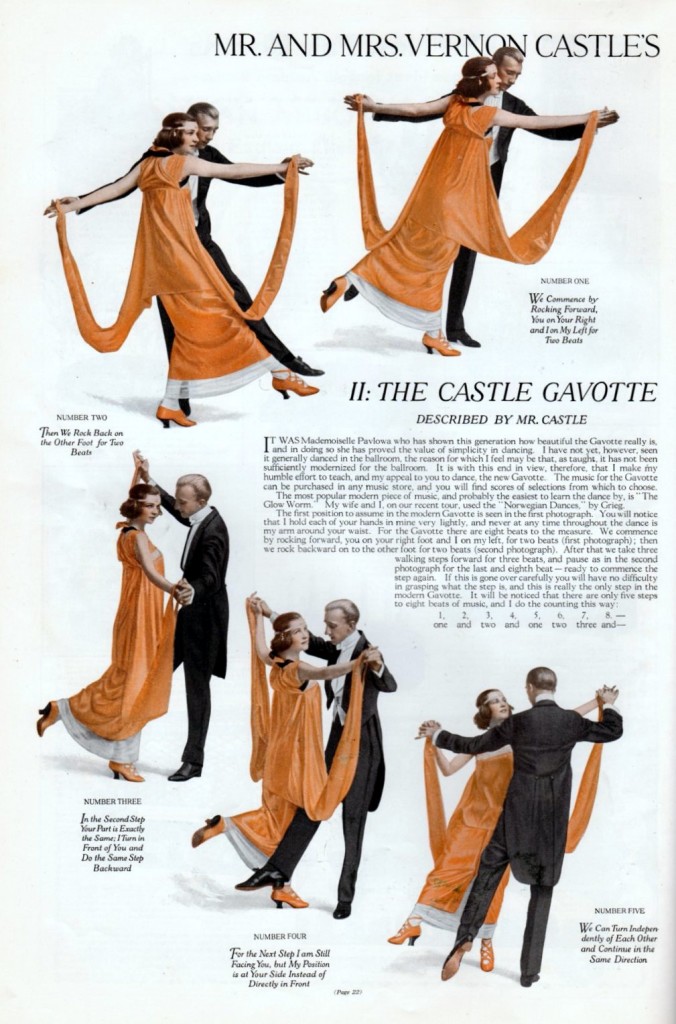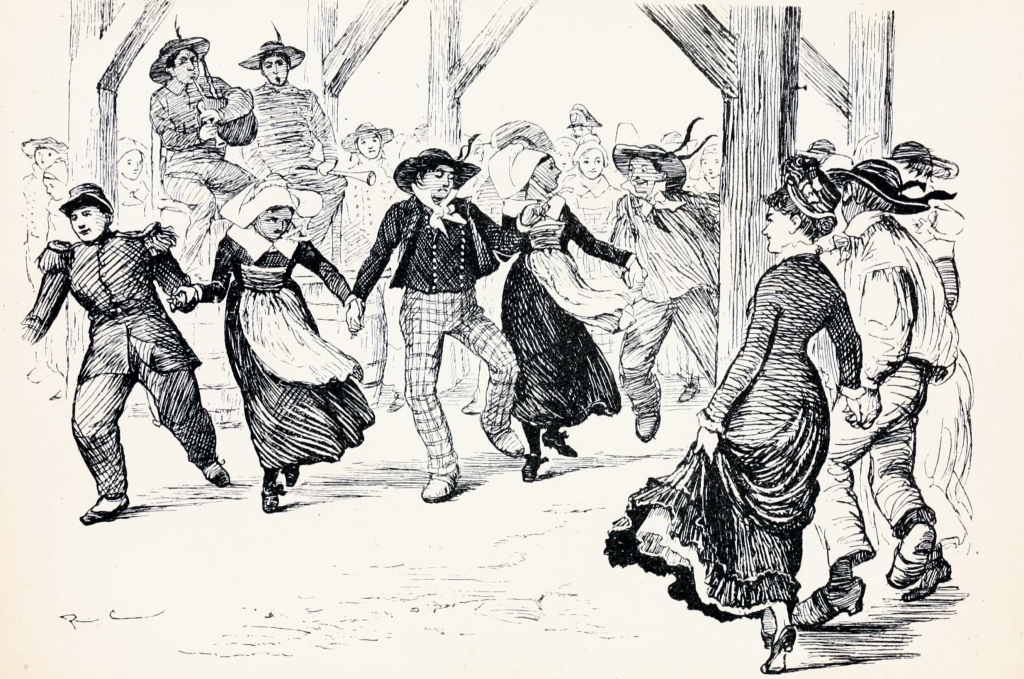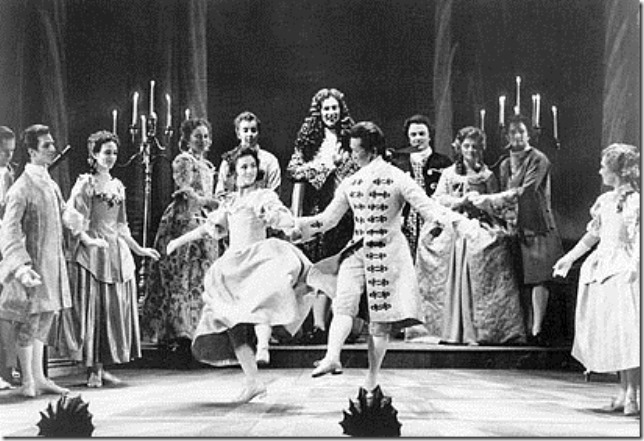The gavotte is an old French dance form. It originated in the southeast of France, in the Pays du Gap region; its inhabitants were called Gavots, and their folk dance, the gavotte (Dias, 2017).

Gavotte, lively peasants’ kissing dance that became fashionable at the 17th- and 18th-century courts of France and England. Supposedly originated by the natives of Gap (Gavots) in the southeastern French province of Dauphiné, the gavotte was danced in royal ballrooms as a round with skipping steps adapted from the branle. Couples concluded improvised duet performances by kissing their partners. Later the dance developed more formal figures, and flowers were exchanged instead of kisses. At the French court in the 18th century, the gavotte was at first stately and later more ornate; its slow walking steps were in 4/4 time, with upbeats on beats 3 and 4 (Britannica, n.d.).
The dance was a very spacious dance and had a interesting benefit, after the group danced for a while the lead couple would dance in the middle of the room, when the male lead would end the passage, he would kiss his partner (Kewl!) then he would kiss all the rest of the ladies in the room, the lady follower would do the same. Dance Master Vestris created many of the rules for this dance.
The dance was performed to a medium to fast tempo music (4/4), however it was slower than the Bouree. The gavotte remained popular till the French Revolution (18th. century.) Marie Antoinette (1755-1793) was a great admirer of this dance. Usually the Minuet would follow a Gavotte.
In 1910 the Dance Masters of America held conference and decided to honor President Rosevelt with a new dance called the Rosevelt Gavotte, however after much debate they decided to call it the Credo Waltz which was a gliding, Stately Waltz. Prof. Oskar Duenweg of Terra Haute created the dance (Streetswing, n.d.).


